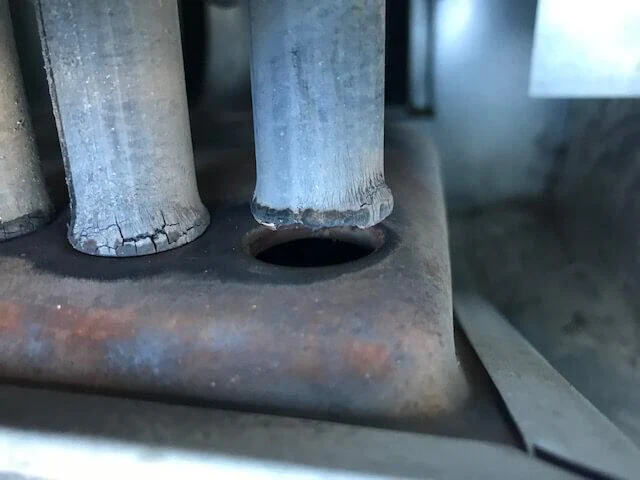Ad Code
Translate
Smart strategies for trading on crypto exchanges
October 20, 2025
Five Do’s For a Healthy Turnover That Bolsters Talent-Retention
October 20, 2025
Discover Honeybee Pharmacy (2025 Guide Important Consumer Tips)
October 14, 2025
What is Ozempic (semaglutide)? (Updated in 2025)
January 30, 2025
Posture Bra: Improving Back Support and Comfort
October 20, 2025
How To Find Suitable Properties In Cyprus?
October 20, 2025
10 Effective Strategies to Improve Domain Authority of Your Website
October 20, 2025
How To Determine if You Need a New Furnace Heat Exchanger
Zizo Gala-Mkhize
June 22, 2022
A furnace heat exchanger is a component of a furnace that helps to heat a home. The exchanger transfers heat between the burning fuel and the air passing over it. This component is thought to have a life span of around ten years and can become defective or damaged over time. When your heat exchanger stops working properly, you will notice decreased furnace efficiency and performance. You will need to replace a furnace heat exchanger if it is not working properly or if it is damaged.
Determining whether or not you need a new furnace heat exchanger can seem daunting, but it doesn't have to be. With a little know-how, you can easily troubleshoot the issue and make an informed decision. Keep reading to learn how to determine if you need a replacement furnace heat exchanger.
Visual Inspection
Furnace heat exchangers are an important part of your furnace system. They help to transfer heat from the burning gases to the air that is circulated through your home. If you suspect that there may be something wrong with your furnace heat exchanger, there are a few things you can look for to determine if it needs to be replaced.
One of the first things you can check is the amount of rust on the exchanger. If there is a lot of rust, it may be time for a replacement. You can also check for cracks or other damage. As a result of the natural processes of expansion and contraction, your exchanger can develop stress cracks or holes. If you see any signs of damage, it is likely that the exchanger needs to be replaced. Cracks can appear anywhere on the heat exchanger and can be in the form of large gapped openings or small cracks or openings. It is important to do a thorough inspection regularly as even small cracks can allow dangerous carbon monoxide gases to escape and create a safety issue. A qualified HVAC technician can help you identify a heat exchanger crack and offer replacement solutions.
Irregular Flame
During normal operation, your furnace should have a steady blue flame. This flame is an essential part of the healing process. However, if you notice an abnormal flame, it could signal an issue with your heat exchanger. Instead of a blue flame, you might notice a yellow or orange flame. An abnormal flame could mean that the exchanger isn't properly transferring heat from the furnace and could indicate improper combustion. If you notice a different colour flame or one that is diminished or flickering, you should call an HVAC professional.
Chemical Smell
A very noticeable sign of a cracked heat exchanger is a strong chemical odour. The smell is often said to resemble that of formaldehyde. This chemical odour is the result of improper combustion from a cracked exchanger and is toxic. Exposure to the odour from a cracked exchanger can cause headaches, nausea, and other symptoms. You'll want to take precautions and stay away from the heat exchanger if you notice any strange smells coming from the furnace. Additionally, you should call a professional technician to solve the problem as soon as possible.
A cracked heat exchanger can have a significant impact on the safety and performance of a boiler or furnace. If the heat exchanger is not properly repaired, the potential consequences could include a carbon monoxide leak or fire hazard. It is important that you understand the signs of a faulty heat exchanger and take steps to correct the problem as soon as possible. Replacing your heat exchanger is a fairly routine and inexpensive job that can be performed by a qualified technician.
Featured Post
DL Mining Launches Ethereum Contract Participation Service, Helping Users Earn $2K Stable Daily Returns
Zizo Gala-Mkhize-
October 20, 2025
Soapie Teasers
Sister Sites
Most Popular
List of 6,000+ Dofollow Commentluv Blogs FREE (Updated 2025)
January 16, 2025
Five Do’s For a Healthy Turnover That Bolsters Talent-Retention
October 20, 2025
How To Choose The Right Place For A Winter Campsite
March 06, 2023
Popular posts
List of 6,000+ Dofollow Commentluv Blogs FREE (Updated 2025)
January 16, 2025
Five Do’s For a Healthy Turnover That Bolsters Talent-Retention
October 20, 2025
What is Ozempic (semaglutide)? (Updated in 2025)
January 30, 2025
Footer Menu Widget
Created By Blogspot Theme | Distributed By Gooyaabi Templates



Social Plugin